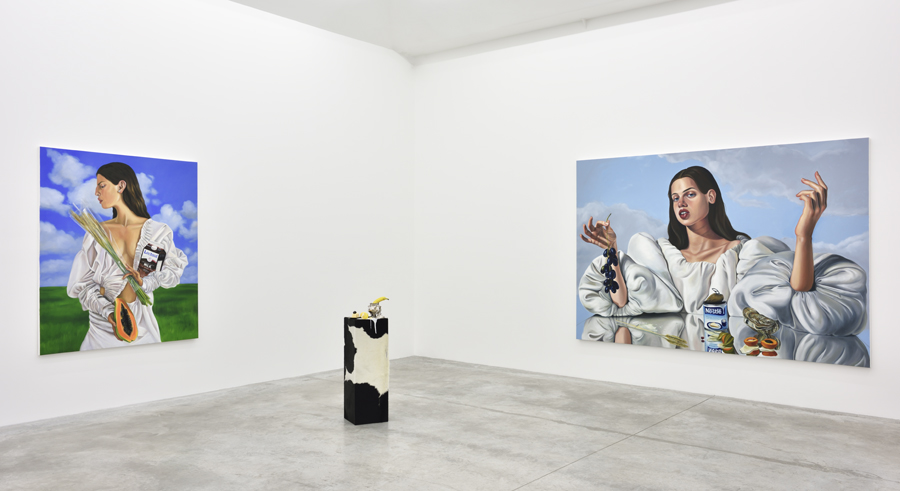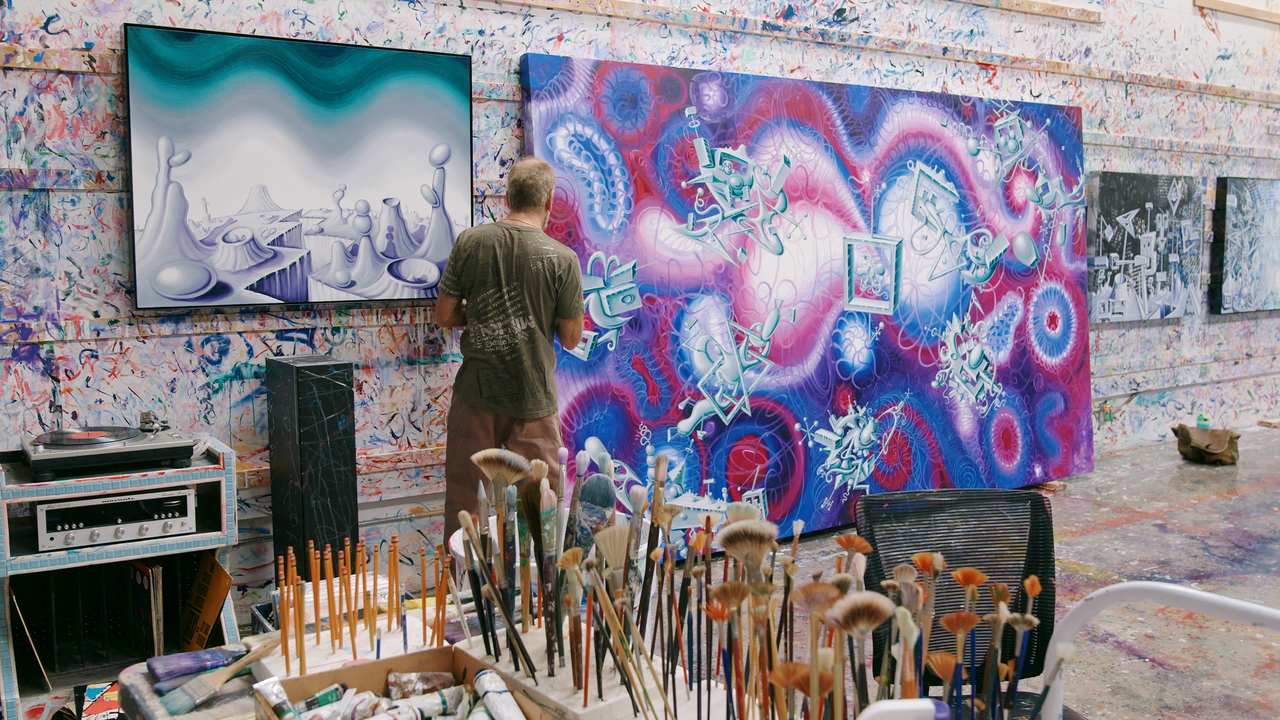Chloe Wise
Almine Rech Gallery, Paris
Almine Rech Gallery, Paris

Standing in the middle of Almine Rech Gallery – housed within a former 18th-century mansion – Canadian sculptor, painter and video artist Chloe Wise tells me that, to her, the 17th-century Dutch still-life genre is the early modern equivalent of rap music. Still-life paintings, like hip hop and rap, permitted patrons to show off their wealth. Artists were encouraged to depict expensive food, drinks and objects, often displayed on lavish materials, such as velvet or technicolour tapestries. Although I have spent years in London libraries trying to understand the complexities of pronkstillevens (sumptuous Dutch still lifes), the idea that they might be conceptualized as a visual prequel to Rihanna’s ‘Bitch Better Have My Money’ (2015) was suddenly clear.
Seven large-scale oil paintings fill the (almost) clinical white cube, softened by centuries-old stucco framing the windows and doors. Nearly all the works depict a woman clutching dairy products against a backdrop of Alpine hills and blue skies. Their clothing and poses recall the milkmaids of European art history. They embody similar attributes to those elegantly crystallized in oil by the 17th-century Dutch painter Johannes Vermeer: domesticity, ‘wholesome’ femininity and tender eroticism. Equally, it is not hard to see Wise’s admiration for modern figurative painters such as John Currin. In Lactose Tolerance (all works 2017), a woman is depicted with her elbows resting on a mirrored table, holding a bunch of grapes. A sheaf of wheat, an oyster, a halved peach and an open can of Nestlé condensed milk are laid out in front of her. She wears an ivory blouse with puffed sleeves that undulate like soft peaks of whipped cream. Frothy ruffles and sheer blouses recur throughout the paintings.

If we judge artistic virtuosity in terms of a diversity of textures and surfaces, as we do with still-life painting of the 1600s, Wise’s works are luminescent. Plinths, covered with mirrors or draped in cowhides, are interspersed throughout the space. Arranged on each are unfastened, hand-cast sculptures of food, moulded from urethane and painted in oils, and silverware collected from Parisian antique markets that are smeared with spilt milk (also made of urethane). The food is uncanny: whether fig halves or a gooey salmon fillet, each piece looks disarmingly real. It’s like being inside the studio of a futuristic Clara Peeters (the 17th-century Dutch still-life painter) or a fantasy dairy aisle in your local supermarket.
Wise uses the popular image of dairy as a satirical entry point to contemporary debates around ideas of ‘wellness’. She tells me that her works reflect the contradictions of health advertising and, in many of the pieces, she references non-dairy alternatives to milk. We are increasingly told that the dairy industry is detrimental to the environment; however, popular substitutes such as soy are also responsible for deforestation. It is this kind of complexity that Wise plays with, which resonates in the era of ‘fake news’.

In the second room, visitors can sit on artificial grass covering the floor and watch a video that further explores ‘wellness’. Wise and her friends wear Nike sports clothing and ‘work out’ in a park. At one point, a girl jiggles her butt in such a ridiculous way that she begins to laugh. It’s hilarious and conjures the awkwardness of a beginner’s aerobics class. The titles of the works also parody health advertisements: Gluten Freedom, A Poem for Pilates and – the only work in the final, darkened room – the immense still life Breaking Sugar on Someone’s Back. The sculpture is replete with food, gothic silverware, baskets, soy products and lit candles. Wise’s statement is problematic – many food corporations (whose products are often packaged in single-use plastic) use ‘health’ imagery to distract from the environmental damage their products inflict. It is also bold in its execution, if not particularly radical. Nonetheless it is all brilliantly comic – and you only need to visit Wholefoods once to get the joke.
Main image: Lactose Tolerance (detail), 2017, oil on canvas, 2.1 x 3m. Courtesy: Almine Rech Gallery, Paris
























